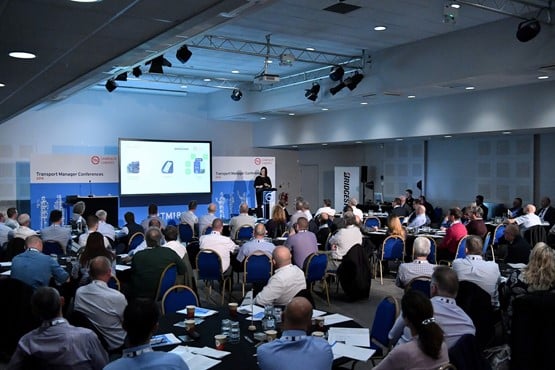More than 21,000 drivers have been referred by the authorities to the traffic commissioners over the past year, with 3,200 called to a hearing and just over a third of those suspended or revoked.
The process is entirely separate from the court system and exists to assess if the driver is fit to hold a vocational licence.
Referrals come via the Driver and Vehicle Licensing Agency (DVLA), Driver and Vehicle Standards Agency (DVSA), Health and Safety Executive (HSE), police and local traffic offices.
However, the number of suspensions could’ve been far fewer had the drivers in question been more honest and upfront with their employers.
Drivers are rarely represented during the hearing process, according to Richard Turfitt, senior traffic commissioner and traffic commissioner for the East, because most of them had not informed their employer.

However, he added: “It means a lot when the transport manager is willing to support a driver. If the driver has already been disciplined and a process is underway to support them, this can be taken into account.”
The statutory guidance documents were updated at the end of October and provide greater clarity of terms for operators as well as additional checks on transport managers, Turfitt told delegates at the FTA Transport Manager conference in Peterborough.
The changes include new inspections on transport managers’ continuous professional development (CPD) at the five-year renewal, or O-licence variation.
Commissioners will check refresher training is in place, and ask for details of industry competence.
Turfitt said: “Your drivers’ skills and qualifications are checked, and the transport manager’s should be, too. It is also important that your directors and employers know how highly they should treat you as a professional.”
The guidance update also covers self-employment status of drivers, after recent HMRC reports, echoing discussions elsewhere in the transport sector about the so-called gig economy favoured by some couriers and delivery firms.
“It’s also important when it comes to control of drivers, assisting you to have a strong disciplinary process in place, and helping you to meet statutory duties,” Turfitt said.
He reiterated that the approach to regulation will be consistent after Brexit, with policy remaining broadly similar to before.
“It’s important to note that the traffic commissioners will not overlook poor performance just because of the continuing driver shortage,” he added. “Our driver conduct hearing processes will remain thorough.”
Lowering carbon emissions
As part of the recent Road to Zero plan from the Government, the logistics industry has agreed to a voluntary 15% carbon reduction in freight by 2025.
Christopher Snelling, FTA general manager for policy, explains: “There is increasing public pressure on a business- by-business basis to commit to reduce carbon.
"Our Logistics Emissions Reduction Scheme (Lers), launched in 2009, was one of the things that helped to persuade Government to go down the voluntary route over regulation.”
The scheme is built on the sharing of fuel use data to record, report and reduce emissions. Membership is free and confidential, with all data anonymised when reported.
The programme has worked with larger fleets historically, but to develop and further reduce emissions, FTA now wants to help smaller operators.
Since 2010, the 132 operators have seen an average fall in emissions (and consequently fuel bills) 13% larger than industry average.
Use of alternative fuels in member fleets is still very marginal – most of the gain has been through better use of diesel vehicles.
The techniques used will, hopefully, be familiar to Commercial Fleet readers – driver training, telematics with incentives, aerodynamics on vehicles, better route planning and load management.
The LERS scheme offers another way of monitoring and collaborating to reduce emissions and costs, and is another free way that fleets can get hold of reliable, anonymised data for benchmarking and performance analysis.

Earned Recognition – quality measurement
The FTA’s most recent Transport Manager survey covered DVSA’s Earned Recognition scheme, launched in April, talking to both those on the scheme and those not yet members.
eighty operators are on the scheme at present, with more than 64% of those respondents not registered considering joining within the next two years.
The scheme sends data regularly to the DVSA and means the agency’s staff are less likely to stop and inspect vehicles at the roadside.
Most of the respondents already in the scheme suggested that being recognised as an exemplary operator was the key benefit, according to the research.
However, Keith Gray, FTA general manager for audits and standards, said that anecdotal conversation backed up figures supporting the use of the electronic tools required to generate the scheme’s data.
“When you look at the key performance indicators (KPIs), they’re really quite stringent, and it gives you an excellent overview of your business,” he said.
The vehicle maintenance data is often more disparate than driver data, which will already be digitised from tachographs.
It could be held on apps, fleet management systems, on paper or even with external maintenance providers.
Putting systems in place for the Earned Recognition process has meant that companies have much greater visibility of this data – which is only sent to DVSA every four weeks and is in arrears, so companies can deal with the issues and put plans in place before the results are sent.
“You don’t just put a correction in the system, you create a corrective action and learn from that,” Gray continued.
“I think the DVSA is underselling earned recognition as an accreditation scheme. It’s actually a quality measurement scheme, that we, as the FTA, think is streaks ahead of anything else in the industry.”

Tyre retreads – as safe as new
The results of an 18-month roadside debris study by Highways England and Bridgestone have shown that retreaded tyres are just as safe as new.
Gary Powell, north region technical manager for Bridgestone, explained more about the programme, which assessed more than 1,000 tyres discarded on motorways in and around the Midlands between 2015-2017.
“We teamed up with Highways England, who gave us access to the debris for us to test, and the results were eye-opening,” said Powell.
74% of damage was due to road hazard damage and over/under inflation. Few manufacturing problems were found.
Powell continued: “Much of what we found would have been prevented by good ‘tyre husbandry’ – performing regular checks on inflation, tread wear, and sidewall damage.
“A lot of the damage found wasn’t recent – it had clearly been in the tyres for a while.”
Where the tyres could be identified as such, Bridgestone’s research discovered 57% of truck and bus tyres discarded were new, and 34% were retreaded, figures broadly in line with sales data across the overall truck tyre market.
Powell added: “We conclude that retreaded tyres are at no more risk of blowouts than new tyres, with the correct inspections and care.”
Powell said the environmental case for retreads was compelling, with a 70kg retreaded tyre only requiring 20kg of new materials in the manufacturing process – which is generally performed in the UK and Europe, reducing carbon emissions on shipping generated by new, Far Eastern manufactured tyres.
The study identified tyre-pressure monitoring systems (tpms) as a help in reducing damage going forward, but warned that fleets needed drivers to identify and remedy damage as soon as possible – to prevent further downtime.


















Login to comment
Comments
No comments have been made yet.